How to Get $1,000 Into Your Emergency Fund Almost Painlessly
The most important thing you can do to strengthen your personal economy is to have an umbrella—an emergency fund with enough money to pay all of your bills for six months. And it needs to be safe and secure in a bank account. Please don’t close this tab because you believe you are in such bad shape financially that it would be impossible to build an emergency fund. Keep reading. There’s hope, and I’ll show you how.
You read that right—half a year’s income! I know what you’re thinking: You can’t imagine being able to save even fifty bucks! No worries. The secret to getting there is to start small. Like $50. It’s time to figure out how and where to do this—how to come up with the seed money to start growing your emergency fund.
10% Off the Top
Weekly, or as you get paid, save 10% of your paycheck right off the top before you do one other thing with that paycheck. It is an obligation to yourself, and you need to see it as mandatory! Can’t do it? I’m sure you can, but OK. Start with 5% or even 1% and build up from there. Just start!
Make it Bill #1
This will be hard, but I know you can do it: Make feeding your emergency fund—whatever the amount—the first bill you pay before anything else.
Once you have accumulated $50, go to your bank or credit union and open a savings account. Or open a free savings account at my absolute favorite place to grow and maintain a Contingency Fund, online SmartyPig.com. Or at an online bank like Ally.com.
Make. Dreams. Happen.
SmartyPig is a free online piggy bank for people to save for financial goals like emergency funds, holiday gifts, vacations, and even retirement. It makes saving fun. Oink!
While you are opening that account, set up an automatic deposit authorization. This will give your bank (where you have your regular household checking account) authorization to automatically transfer the amount you designate—$10, $100, or ?—from your checking account straight to your emergency fund—on the exact day you specify.
Here’s a secret: You won’t miss what you don’t see. Okay, you’ll miss it for the first few paychecks, but soon you will not miss it.
Get Rid of Non-Essentials
Determine to give up non-essentials: Things such as cable TV, eating out, gym membership, and that landline phone you have but never use. That’s a start; you’ll instinctively know how to add to this list.
Reduce Variable Expenses
You can’t cut off your utilities, stop eating, or give up driving. But you can reduce the cost of the food, energy, and fuel you buy. Opt for the cheapest supermarket and gas station. Turn out the lights; turn down the thermostat. Stop making so many unimportant trips. Think twice before you get in the car. Determine to combine all of your errands so you make one trip. Every little bit counts—it all adds up!
Quit Smoking (or fill in the blank)
This suggestion requires no explanation, although it does beg the question: Who can even afford to smoke these days? At about $8.00 for a pack of 20 smokes (U.S. average), that’s a $2,300-a-year habit. And in New York City, an average smoker spends more than double that—$4,705 annually!
In every state the cost to buy cigarettes for 20 years is over $48,000; that is enough money to buy a new car or in some areas a down payment on a house.
Not a smoker? Substitute smoking with your personal vice that’s keeping you broke.
Stop Paying Bank Fees
If you’re paying a $7.95 (or higher) per month fee for the privilege of maintaining an account, stop! Open an account at an online bank (they pay better interest rates, too), like Ally Bank, that doesn’t charge a monthly maintenance fee for checking or savings accounts. Or check with a local credit union for free personal checking accounts. Some banks, like U.S. Bank, even offer free basic business accounts.
Pull Back
Stop sending more money than required each month to your credit card companies, mortgage lender, or any other creditor. It’s admirable that you’re diligent about repaying your debts, but if you continue to do this while living without money in the bank, you’re setting yourself up to fall even deeper into debt.
How does that work? Think about it. Something is going to happen that you didn’t see coming, let alone planned for. How will you cover the cost of a new refrigerator when yours suddenly gives up the ghost? I could make a list a yard long for all the things that could happen to require you to fork over $50, $500, or more. What will you do if you have spent every dollar in your name in a mad rush to pay down debt rather than create a Contingency Fund?
Clean Out
Take a look through your cupboards and closets. Identify everything you haven’t used in the past six months. Turn what you don’t need into cash using a website like eBay or Craigslist. Or hold a yard sale. Add every nickel of the proceeds to your emergency fund savings.
Got books, CDs, electronics, etc., that are current, in good shape, and you’d like to sell? Go to Decluttr to see if they’re buying what you’re selling. It’s super easy, and while you won’t get rich, it’ll be more than you have with all that junk sitting there in your garage or basement.
And don’t forget about your wardrobe! Take a moment to sift through your clothing items. Have gently used items that no longer fit or pieces with tags still attached that you never got around to wearing? Consider selling them on sites like Poshmark or Depop. You’d be surprised at how quickly those unused garments can turn into cash to bolster your emergency fund.
Make it Yourself
Start cooking and baking. Even if you aren’t cooking from scratch, making meals at home will cut your food costs. Whatever it takes, find ways to stop the endless money drain you’re forking out on food. For example, a decent loaf of bread now costs upwards of $5.00 a loaf at the supermarket or bakery. You can make it yourself for $.50 a loaf. This is just one example.
Increase Your Income
Get a second job. Or third. Work more hours at your current job. Get a side gig. Get creative by making money doing things you already love to do, like dog walking or selling handmade items. Stop expecting someone else to cover your shortfall.
Take Lunch to Work
Have you figured out what you’re spending per year on eating lunch out? Even at $15 a day (not easy to do these days), you’re spending $3,750 after-tax dollars on lunch! Just think of all the dinner leftovers you throw out that could easily be tomorrow’s lunch.
Adjust Withholding
Use the IRS Federal Withholding Tax Calculator to make sure you aren’t having too much income tax withheld from your pay. Adjust until you are as close to neither owing nor being owed. How? Use the calculator to determine how much you should be having withheld, then contact your employer to adjust your withholding amount. You have every right to make that decision, and you should! On your next payday, you may see more money in each paycheck. Don’t spend it—save that increase straight into your Contingency Fund!
Stop at the Match
If you are contributing to a retirement account like a 401(k) or 403(b) and you do not have a healthy Contingency Fund as your safety net, don’t stop your contributions. Instead, adjust your contribution to be the same as the amount your employer matches—typically, that’s 3% to 5%. Now, you are not leaving free money on the table, but you will see more money in your paycheck that you can immediately direct to your contingency fund.
You Need a Lifesaver
Your CF (Contingency Fund, which I prefer to call an emergency fund) is your financial lifesaver, especially when you are in debt and living paycheck to paycheck.
Let’s say you save up $75. Great start! Then WHAM! Your car suffers a blowout. The tire is shot. A new one will run you $200, but the tire shop sells certified used tires for $50 each. See how this works? Instead of putting another $200 on your credit card—leaving you defeated and sure you will never see financial freedom—you pay CASH from your CF for the $50 tire. Then, you immediately replenish and get back on track by replacing that $50 to grow your CF even bigger.
Just Do It
It’s time to get a scorched-earth mentality. Put these money-saving tactics into play with the kind of mental toughness you would exhibit when determined to win a battle. Cut out all the crap, stop paying others to do for you what you can do yourself. Fire the lawn guy. Clean your own house. Delete your Grub Hub and DoorDash apps from your phone. Make this a top priority and you’ll be able to save $1,000 in record time.
But don’t stop there. First, let me know so I can celebrate with you, then keep going, one dollar at a time. Soon you’ll have $5,000; then $10,000 or more set aside to keep you afloat during times of financial distress. Trust me on this: Difficult days are ahead for all of us. The best time to have started doing this was 20 years ago. The second best is today.
Oh, how I love this concept and plan! No matter your current financial situation, you can put yourself in charge of your finances. You are not a victim. You’re a money manager, learning the ropes, gaining experience, and destined to be the CEO of your life. And a mighty fine CEO you will be!
Question: Have you ever sold unused items to boost your emergency fund? Share your experience and any tips you have for others! Let us know in the comments below.

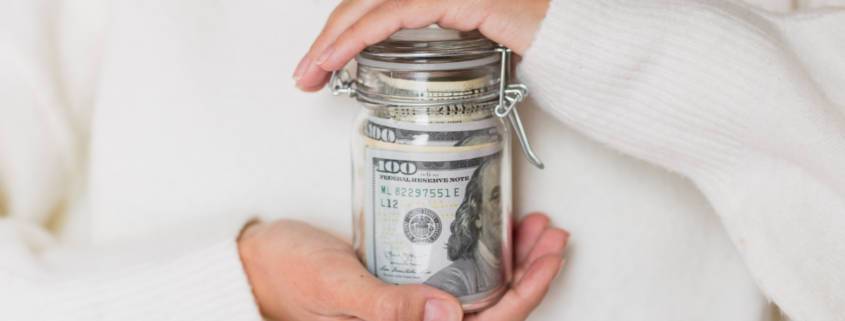

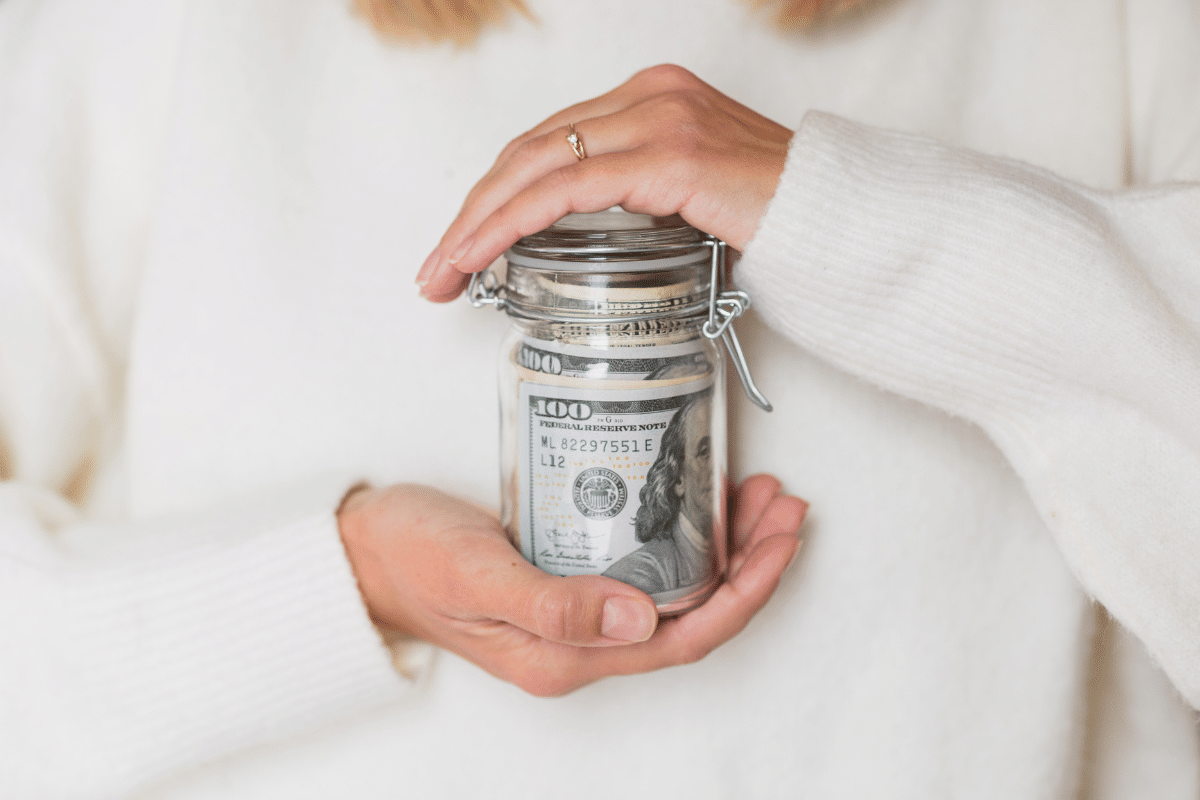



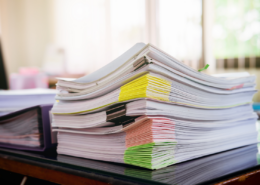
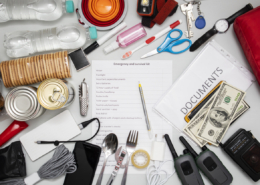



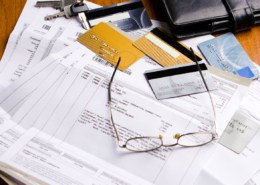



My employer paid via electronic fund transfer and allowed the amount to be split into several accounts or even financial institutions. I just made one of the transfers 10% of the amount and put the balance in my chequing account for day to day expenses. The other thing I did, and I know not everyone agrees with this, was to increase the withholding and then get a tax refund which I put directly into my retirement fund. I know I could have put the equivalent amount in each pay period, but this didn’t require any work on my part.
Two ideas:
There are credit cards and apps which roll up every purchase up to the next dollar and deposit it for you.
Or do your own rounding. Save the change from every cash purpose. If you put the change in a pocket put it into container. Those who have a coin purse may have to start the habit and learn not to be joyful at having exact change. Coinstar will turn it into a deposit at some banks or turn it into a gift certificate. To turn into cash you MAY need to give them a percent, but ones at supermarkets will let you spend the entire amount there and you can get the whole amount on Amazon Gift Certificates. Great for holiday shopping.
i belong to a credit union and i dont have to pay a fee to put my change in the machine, then give to teller! i do end up just putting the amount back into my checking acct
We also save loose change, but instead of paying Coinstar we take it to the credit union and pour it into a machine ourselves. It’s prints out a receipt for the amount and you take it to the teller and deposit it in your account or they will pay you cash. But there’s no fee to pay.
I have a bit of a different perspective regarding credit card payments. I find that paying more on the cards , instead of putting money in savings does two things.
First it reduces interest charges. (Especially if you’ve managed to pay the entire balance)
Second, putting more money into a card balance still allows you to access this money at a moments notice. Instead of putting the money into a savings account, you are simply putting it “into” the credit card account. It’s the same thing. In fact, my wife and I put our entire paychecks onto our card accounts, then pay All Our bills with cards. A side benefit is that we get bonus cash and airline points on all our cards. Example, with my Amazon card that I paid off each month, I got $1200 in cash back. (And I still have the entire balance for emergencies) I used that for the kids Xmas gifts. How’s that! Free Xmas gifts. Doesn’t get better than that. Also I got a free ticket from Houston to San Diego to visit my son in the Navy. Treat that credit card just like a savings account. Save “into” that account. If you rent then you can really make out like a bandit by paying with a points earning card. You have to pay that bill anyway, why not earn cash back or points on it. Same with car payments. There is also a way to pay your mortgage with a card but that’s more involved for this post. Don’t make debt bad. Use it as a tool. Beat the card guys at their own game. You have the power.
Thanks
Always Enjoy your articles
That’s a nice theory Todd, but I can promise you, based on personal experience, it is a guaranteed method to achieve a life a perma-debt. It’s a fool’s game to try to beat the credit card issuers.
Many years ago, all I heard was pay yourself first to get started saving. I just couldn’t see, how I could do that. Well, it took me awhile, but finally I put some money away first, and you really don’t miss it. It’s like paying a bill. Couple times, we had situations arise that we never saw coming, and we made it through the tough times. It is difficult at times, but you feel so much better when you have an emergency fund. Thank you for all your tips, you really help everyone. We truly are grateful for you MARY!
We have lived this way for many years. Now retired, we are debt-free and have a savings account to turn to when unexpected expenses exceed our retirement income – like last year when we had to replace range, microwave, and refrigerator all within 2 months – and were able to pay cash for everything from our savings. We still make a car payment to our savings every month, so when we buy a vehicle our budget is what ever is in the account plus the value of our trade-in. Sometimes that means buying a year or two older vehicle, or waiting another year to buy.
We never had cable or drove fancy cars, planned out any vacations well in advance and within a budget, and managed to save or stay on budget even through layoffs, temp jobs and raising kids by tightening our belts in lean times.
Fifth Third bank offers a free account called DOBOT that periodically withdraws random amounts from our checking account. You can set parameters and dollar amounts, as well as goals to work toward. I also get periodic texts asking to move money from my account to DOBOT, to which I can respond to approve an amount to move (or not). I have saved $549 since September, without really “missing” it from my checking account! It has worked very well for me!
Our family was inspired by Miss Mary about 10 years ago. We had limited savings and not big incomes, my husband is self employed and I had just started a new job. Automaticity is key, you don’t miss what you never had to spend. We set our goal at $10,000 and it was difficult at first, but seeing it accumulate the first five years was exciting! I can’t tell you how many times it has saved us from putting things on credit cards these last 10 years, from braces to automobile repairs. We also set them up for our two daughters. Every time we take money out, we commit to putting it back as a first priority. Most recently it allowed us to come up with the downpayment for our dream home in Wyoming. If you combine your Emergency Fund with Mary’s Envelope System for budgeting you will see your money begin to accrue, not at first, but over time. It is wonderful to leave $$ worries in the dust because you know you always have a safety net that you created! P.S. A tip we want to pass on is this–every time we borrow money from our Emergency Fund we charge ourselves 10% interest when we pay it back to ourselves. So, if we need $5,000 to pay for braces, we pay back $5,500. We invest in ourselves and give ourselves a much better rate of return than any bank!
Thanks Holly! You said it all better than I could. Charging yourselves interest is awesome, by the way 🙂
Add to that list. Getting a payraise, COLA or promotion? You are already living on the amount you make so put the difference in your check into savings preferably by payroll deduction so you don’t spend it. You of course have to wait for the first check to know the amount but make that change and it becomes a habit. This has been my habit for 30 years now. It really helps.
Mary about four years ago we saw the SUV we wanted. It was eight months old, just like new with low mileage.I was able to sell my car to a friend and we had the rest in the bank. I have never been so happy. We are still building the fund back up because we had to replace our shower and this year new washer and dryer. All paid for cash because we continue to save in our fund. There is nothing like the peace of mind this gives you.
From a very young age when I started making money my grandpa would tell us to “pay yourself first”. He explained that when times or circumstances are hard it is difficult to keep your head about you when you are in a panic. How true. So from a young age I would stash 10% of my babysitting money in my ballerina jewelry box. As it grew the more I wanted to add to it. I became more aware of my spending because seeing that money adding up became my realization of independence. As an adult I and my husband did the same and believe me it saved us more than once. So thanks for the tips Mary, you’ve added to the great ideas my grandpa first instilled in me as a kid and I now instill in my grandchildren.